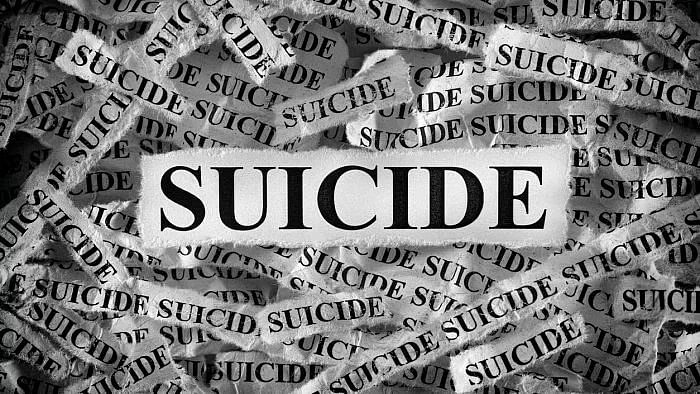
Representative image with the word 'suicide'.
Credit: iStock Photo
New Delhi: India’s annual economic burden from suicide is over Rs 1.40 lakh crore ($16.7 billion) with Karnataka topping the list with nearly one-fifth of the load, public health researchers have estimated in a new study.
Karnataka -- Rs 23,000 crore ($2.78 billion), Tamil Nadu -- Rs 21,000 crore ($2.54 billion) and Maharashtra -- Rs 18,000 crore ($2.17 billion), together account for close to 45 per cent of the nationwide burden, which is way above the Union Health Ministry’s annual Budget.
Other states registering a big financial loss include Gujarat, West Bengal and Uttar Pradesh.
The maximum number of suicides is reported from the 20-34 years age group that is responsible for 53 per cent of the national economic burden, say the researchers, who used data from 195,000 plus suicides across 31 states and union territories in 2019 for the calculation.
“Suicides have an economic cost. The young and working people contribute towards the economy. If you don’t have policies to prevent self-harm, it is going to impact economic productivity,” corresponding author of the study Siddhesh Zadey from Association for Socially Applicable Research, Pune told DH.
In 20 states and UTs, the greater burden comes from suicides among the females.
The study – published last week in the Lancet – is the first state-wise economic quantification of a social malaise that is unfortunately growing in most parts of the country, flagging a need for intervention to prevent the loss of lives.
The cost calculation, the researchers say, should act as an impetus for investing in suicide prevention measures that currently face an economic barrier because of the limited budget available for improving mental health.
India has the world’s highest suicide burden with a death rate of around 14 per 100,000 as against the global rate of nine and yet an economic burden assessment is missing.
The National Suicide Prevention Strategy has a target to reduce the suicide mortality by 10 per cent by 2030.
“Findings from our study and previous literature show large disease and economic burden of suicides in India. Yet, investments toward prevention have been limited. Our estimates note the cost to the Indian economy due to inaction,” they reported.
Mental health is underfunded in India, with an annual allocation of less than 1per cent of the health budget and barely any clarity over allocation of funds to meet the objectives of the national strategy.
“Limited financing, in part, is due to the failure to recognise suicide as a societal concern with a direct impact on the country’s economy. A way to acknowledge suicide as a major societal concern is to quantify its economic burden,” they said.
While there are multiple ways to measure the economic burden of diseases and injuries, the ASAR team used what is known as a human capital approach.
This considers the economic productivity of a person’s skill or educational training and uses the data to estimate the productivity losses for the years of life lost due to premature mortality. They calculated the productivity of people in the 15-60 years of age group.
The study comes close on the heels of another set of six research papers in the Lancet Public Health in which an international team of researchers argued that a change in the narrative would be needed to incorporate measures to address social factors in national suicide prevention strategies in order to prevent people reaching the crisis point.
